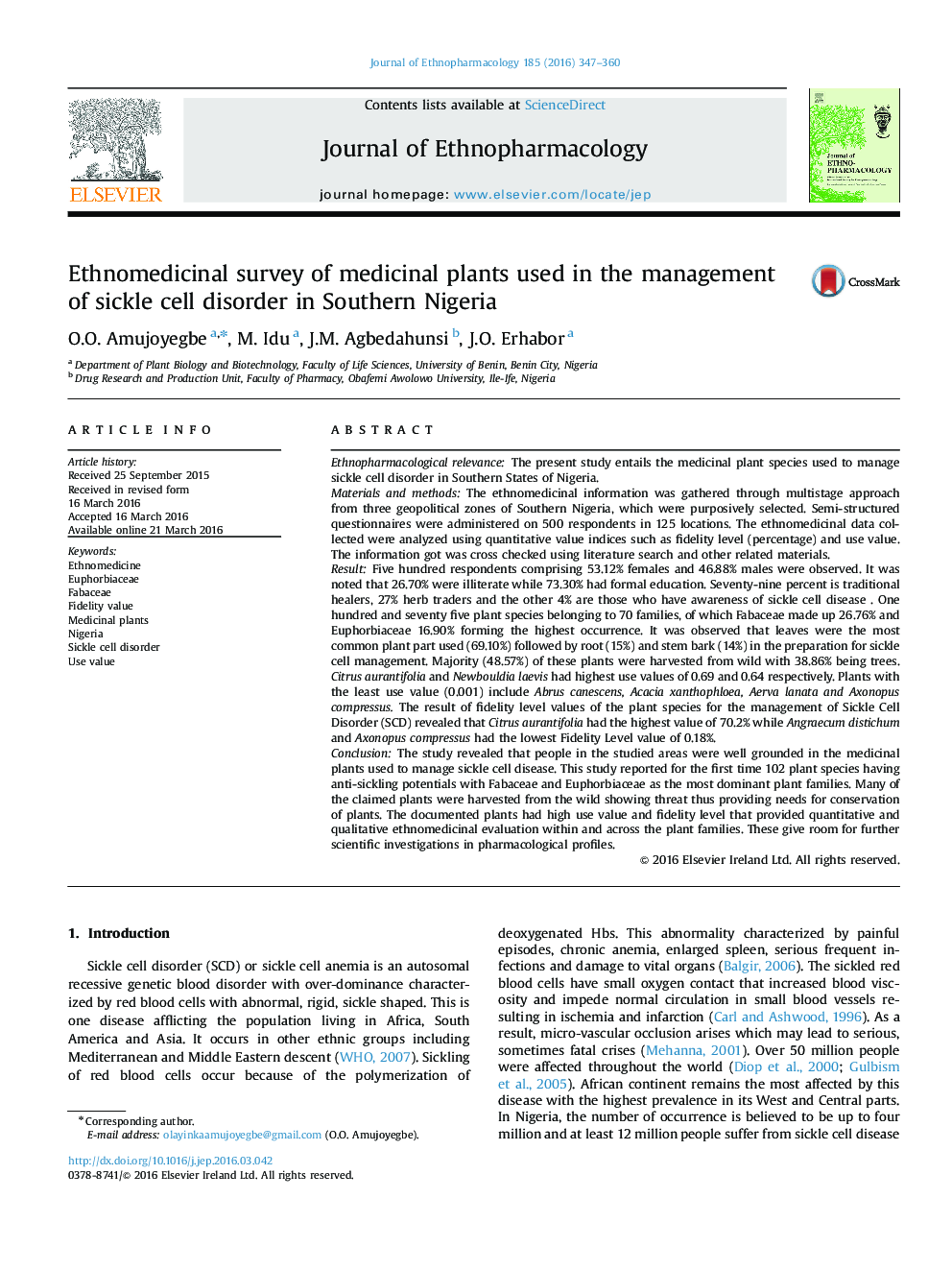| کد مقاله | کد نشریه | سال انتشار | مقاله انگلیسی | نسخه تمام متن |
|---|---|---|---|---|
| 2544851 | 1560377 | 2016 | 14 صفحه PDF | دانلود رایگان |
Ethnopharmacological relevanceThe present study entails the medicinal plant species used to manage sickle cell disorder in Southern States of Nigeria.Materials and methodsThe ethnomedicinal information was gathered through multistage approach from three geopolitical zones of Southern Nigeria, which were purposively selected. Semi-structured questionnaires were administered on 500 respondents in 125 locations. The ethnomedicinal data collected were analyzed using quantitative value indices such as fidelity level (percentage) and use value. The information got was cross checked using literature search and other related materials.ResultFive hundred respondents comprising 53.12% females and 46.88% males were observed. It was noted that 26.70% were illiterate while 73.30% had formal education. Seventy-nine percent is traditional healers, 27% herb traders and the other 4% are those who have awareness of sickle cell disease . One hundred and seventy five plant species belonging to 70 families, of which Fabaceae made up 26.76% and Euphorbiaceae 16.90% forming the highest occurrence. It was observed that leaves were the most common plant part used (69.10%) followed by root (15%) and stem bark (14%) in the preparation for sickle cell management. Majority (48.57%) of these plants were harvested from wild with 38.86% being trees. Citrus aurantifolia and Newbouldia laevis had highest use values of 0.69 and 0.64 respectively. Plants with the least use value (0.001) include Abrus canescens, Acacia xanthophloea, Aerva lanata and Axonopus compressus. The result of fidelity level values of the plant species for the management of Sickle Cell Disorder (SCD) revealed that Citrus aurantifolia had the highest value of 70.2% while Angraecum distichum and Axonopus compressus had the lowest Fidelity Level value of 0.18%.ConclusionThe study revealed that people in the studied areas were well grounded in the medicinal plants used to manage sickle cell disease. This study reported for the first time 102 plant species having anti-sickling potentials with Fabaceae and Euphorbiaceae as the most dominant plant families. Many of the claimed plants were harvested from the wild showing threat thus providing needs for conservation of plants. The documented plants had high use value and fidelity level that provided quantitative and qualitative ethnomedicinal evaluation within and across the plant families. These give room for further scientific investigations in pharmacological profiles.
Figure optionsDownload high-quality image (138 K)Download as PowerPoint slide
Journal: Journal of Ethnopharmacology - Volume 185, 5 June 2016, Pages 347–360
